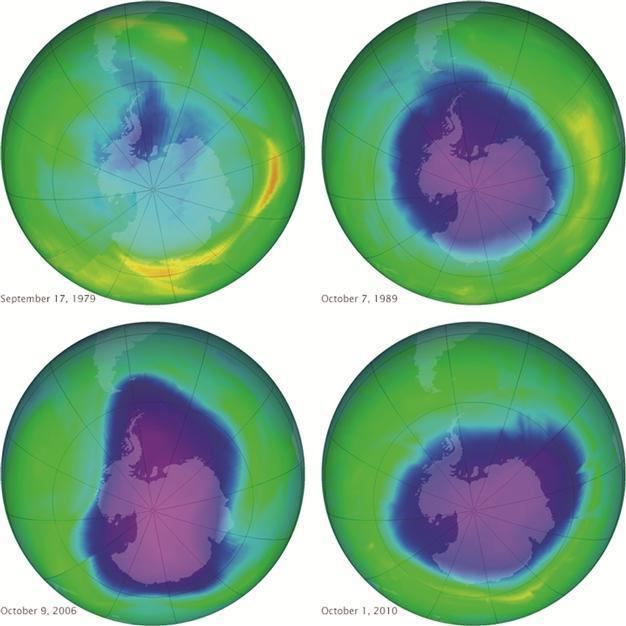Scientists say the ozone layer is recovering
WASHINGTON - The Associated Press

This image shows the ozone layer over the years 1979, 1989, 2006, 2010. AP Photo / NASA
Earth’s protective ozone layer is beginning to recover, largely because of the phase-out since the 1980s of certain chemicals used in refrigerants and aerosol cans, a U.N. scientific panel reported Sept. 10 in a rare piece of good news about the health of the planet. Scientists said the development demonstrates that when the world comes together, it can counteract a brewing ecological crisis. For the first time in 35 years, scientists were able to confirm a statistically significant and sustained increase in stratospheric ozone, which shields the planet from solar radiation that causes skin cancer, crop damage and other problems.From 2000 to 2013, ozone levels climbed 4 percent in the key mid-northern latitudes at about 50 kilometers up, said NASA scientist Paul A. Newman. He co-chaired the every-four-years ozone assessment by 300 scientists, released at the United Nations.
“It’s a victory for diplomacy and for science and for the fact that we were able to work together,” said chemist Mario Molina. In 1974, Molina and F. Sherwood Rowland wrote a scientific study forecasting the ozone depletion problem. They won the 1995 Nobel Prize in chemistry for their work.
The ozone layer had been thinning since the late 1970s. Man-made chlorofluorocarbons, called CFCs, released chlorine and bromine, which destroyed ozone molecules high in the air. After scientists raised the alarm, countries around the world agreed to a treaty in 1987 that phased out CFCs.
Levels of those chemicals between 30 and 50 miles up are decreasing. The United Nations calculated in an earlier report that without the pact, by 2030 there would have been an extra 2 million skin cancer cases a year around the world. The ozone layer is still far from healed. The long-lasting, ozone-eating chemicals still lingering in the atmosphere create a yearly fall ozone hole above the extreme Southern Hemisphere, and the hole hasn’t closed up. Also, the ozone layer is still about 6 percent thinner than in 1980, by Newman’s calculations. Ozone levels are “on the upswing, but it’s not there yet,” he said.
















